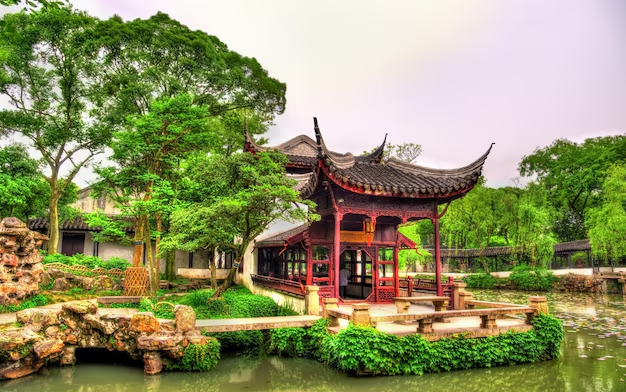The Humble Administrator’s Garden, or Zhuozheng Yuan, is one of Suzhou’s most iconic classical gardens and a UNESCO World Heritage Site. Located in the heart of Suzhou, Jiangsu Province, this masterpiece of Ming Dynasty landscape design offers visitors a serene escape into nature, history, and Chinese culture. Whether you’re a history buff, a nature lover, or simply a traveler seeking beauty, this guide will help you make the most of your visit.








A Travel Guide to the Humble Administrator’s Garden
Getting There
The Humble Administrator’s Garden is conveniently located at 178 Dongbei Street, Gusu District, Suzhou. If you’re traveling from Shanghai, take a high-speed train to Suzhou Railway Station (about 25-30 minutes), then hop on a taxi or bus (lines 1, 2, or 5) to the garden. It’s roughly a 15-minute ride from the station. Alternatively, Suzhou’s metro system (Line 1 or 4) can drop you off at nearby stops like Lindun Road, followed by a short walk.
Best Time to Visit
Spring (March to May) and autumn (September to November) are ideal, with mild weather and stunning seasonal scenery—think blooming lotus flowers in spring or golden foliage in fall. Summers can be hot and crowded, while winters are quieter but chilly. Aim for early mornings to avoid peak tourist hours and enjoy the garden’s tranquility.
Ticket Information
Admission costs 90 CNY (peak season, April to October) or 70 CNY (off-season, November to March). Tickets include access to the garden and the Suzhou Garden Museum nearby. It’s open daily from 7:30 AM to 5:30 PM, with last entry at 5:00 PM. Buy tickets on-site or online to skip the queue.
Exploring the Garden
Spanning 5.2 hectares, the Humble Administrator’s Garden is divided into three main sections: the Eastern, Central, and Western Gardens. Here’s what to see:
Central Garden: The heart of Zhuozheng Yuan, this area features a large pond surrounded by pavilions, rockeries, and lush greenery. The “Fragrant Isle” (Xiangzhou) pavilion, resembling a boat on water, is a highlight. Take your time to admire the water lilies and the delicate reflections on the pond.
Eastern Garden: Known for its open spaces and elegant structures like the “Hall of Distant Fragrance” (Yuanxiang Tang), this section offers a peaceful vibe. The name comes from the lotus flowers that bloom nearby in summer, filling the air with their scent.
Western Garden: Smaller but intricate, this part has winding paths, cozy courtyards, and the striking “Thirty-Six Mandarin Duck Hall,” split into two sections for seasonal use. It’s a great spot for photos.
The garden’s design follows traditional Chinese principles of balance and harmony, blending man-made structures with nature. Keep an eye out for poetic inscriptions on plaques and the clever use of “borrowed scenery,” where distant views enhance the garden’s charm.
Tips for Your Visit
Wear Comfortable Shoes: The garden has cobblestone paths and plenty of walking, so prioritize comfort.
Bring a Camera: The picturesque landscapes are a photographer’s dream, especially around the ponds and bridges.
Audio Guide or Tour: Rent an audio guide (available in English) or join a guided tour for deeper insights into the garden’s history—it was originally built in 1509 by a retired official, Wang Xianchen, as a private retreat.
Stay Hydrated: Bring water, especially in summer, as shaded areas are plentiful but it can get warm.
Nearby Attractions
Make a day of it by visiting other Suzhou classics nearby:
Suzhou Garden Museum (free with your ticket): A quick walk away, it explains the art of Chinese garden design.
Lion Grove Garden: Another UNESCO site, famous for its maze-like rock formations, just 5 minutes away.
Pingjiang Road: A historic street with canals, shops, and teahouses, perfect for a post-garden stroll.
Dining Options
After exploring, grab a bite nearby. Try local Suzhou cuisine like sweet-and-sour mandarin fish or pan-fried buns at a restaurant on Pingjiang Road. For a quick snack, street vendors near the garden sell sesame cakes or tea eggs.
Final Thoughts
The Humble Administrator’s Garden is more than just a pretty space—it’s a window into China’s artistic and philosophical past. Take your time to wander, sit by the water, and soak in the calm. It’s a place where every corner tells a story, and with this guide, you’re ready to uncover its wonders. Enjoy your trip!













